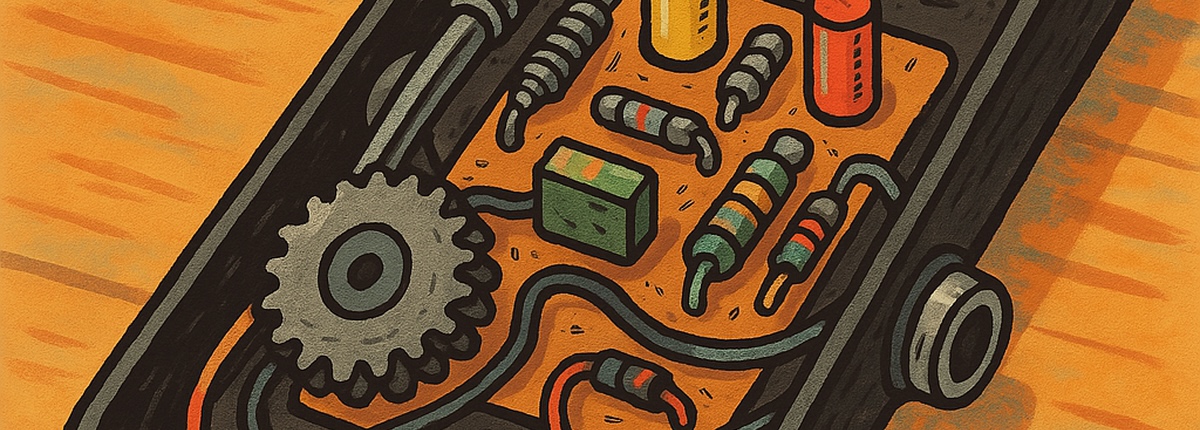
By Ed Malaker
Posted 03/25/2025
The wah pedal is one of the most popular guitar effects of the past 50-plus years, and for a good reason, because it can add a ton of color to our instrument without us having to change how we play it. Many of us first heard it on the Jimi Hendrix song “Voodoo Child (Slight Return)” or maybe the “Shaft” Theme Song, but when was it invented, and how does it work? Let’s dig in and explore these questions!
What Is A Wah Pedal? What Does It Do?
Basically, the wah pedal is a pedal that makes your guitar go “wah”. It might sound simple but that’s actually the truth! In more technical terms, the wah is a bandpass filter that cuts frequencies above and below a certain point. It also boosts some frequencies it doesn’t cut, giving the guitar a unique tone when you switch it on.
The wah pedal is like any other guitar pedal that sits on the floor,, but instead of stepping on it only to turn it on and off, you use your foot to operate a lever that controls the effect while you play. It looks and operates similarly to a volume control pedal for the guitar or keyboard, but instead of making the instrument louder or softer, it adjusts the “wah” level. The real magic happens as you rock the pedal back and forth. Doing so causes the bandpass filter to move up and down over the frequency spectrum. That’s where you find that iconic “WAH” or “OW” sound.Many people also liken it to the sound of a baby, which is likely where Dunlop came up with the name “Crybaby”. It can help your guitar achieve very human vocal qualities, as you can hear by listening to Steve Vai demonstrate the wah pedal at the beginning of the song “Yankee Rose” by David Lee Roth, or his song, “The Audience is Listening”. Of course, you can just use it as an effect that sounds cool, like Cream’s “Tales of Brave Ulysses”. Some of the most popular wah pedals are the VOX, Dunlop Crybaby, and Morley Bad Horsey, but there are many brands available now that all sound great.
How Does the Wah Pedal Work?
Capacitors and Resistors
Manufacturers create the bandpass filter using capacitors and resistors, much like the tone control in your guitar. The capacitor values will determine the sweep range, with lower values increasing it, while the resistors determine the sharpness of the resonant band. Larger values will narrow the band, making the effect more pronounced, while smaller values will have the opposite effect.
Potentiometer and Inductor
A potentiometer that you turn with your foot works with an inductor to adjust the smoothness and aggressiveness of the sweep as you rock the pedal. Inductors are simple electronic devices that are essentially a coil of insulated wire, often placed around a magnetic core of iron or ferrite. Besides wah pedals and other tone control circuits, we see them frequently in radios and television circuits. They help us prevent the flow of alternating current while letting DC pass, and they help us create tuned circuits for receiving specific stations.
Though they all work the same, there are many different kinds of inductors that you can install in your wah pedal, which can each affect the final tone. For example, some popular inductors that you will find in a wah pedal include Fasel, Halo, Dunlop, and others. Since these inductors can create sought-after tones, you will often find guitarists seeking out vintage pedals with inductors that are no longer available, making them highly collectible. However, modern pedals are still quite usable.
When Did The Wah First Appear?
The invention of the wah pedal is shrouded in some mystery, but many people believe it started at the Thomas Organ Company, which distributed VOX amps. After the Beatles appeared on Ed Sullivan in 1964 next to a VOX amp, the manufacturer looked to capitalize on the exposure by producing a Beatles amp. The amp they created had a unique midrange controller named Mid-Range Resonant Peak (MRP), essentially the wah circuit without the ability to sweep it. When attempting to replace the MRP with a simpler circuit to reduce costs, the engineer Brad Plunkett noticed that turning the knobs on the original circuit created a sound that resembled a baby. He then put the circuit into a pedal you could control with your hands before installing it into a piano volume pedal, allowing guitarists to control it with their feet. A short time later, the pedal became a popular favorite and still uses the same basic circuit.
Auto Wah/ Envelope Follower
The envelope follower or auto-wah is the same effect as a wah pedal, but you control the sweep with your string attack. Softer playing will leave the lower frequencies pronounced while hitting the strings harder will cause the bandpass filter to sweep up to the higher frequencies.
Other Options
Besides the many available brands, many wah pedals allow more settings and adjustments. Some will let you adjust the resonant peak and bandpass filter to create a stronger or more subtle effect, reducing your need to hunt for the perfect inductor. Some pedals will also allow you to combine the effect with volume, distortion, or other effects to create new guitar tones.
Summary
The iconic sound of the wah pedal uses capacitors and resistors to create a bandpass filter that filters out sounds above and below a specific range while boosting frequencies within that range. An inductor and tone pot then sweep the bandpass filter from low to high frequencies to create an effect that can sound a lot like a human voice. With a little practice, the wah pedal can help your solos be more expressive without interfering with your playing. Thanks for reading!
